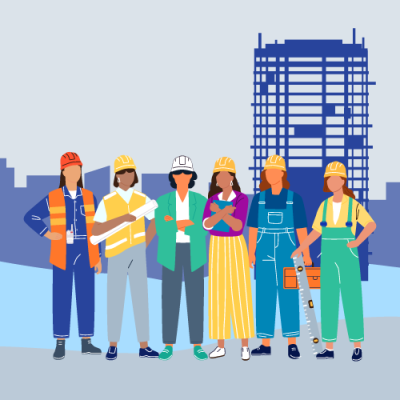The Impacts of Working and Living in Loud Environments
Thursday, August 30, 2018 Brenda Griffin
We live and work in a noisy world with all kinds of sounds. Some sounds we enjoy - like music and laughter. Others irritate - like ongoing banging and humming. Still others can cause harm - like jet engines and heavy equipment. At the end of the day, the effects of any noise are real and can be devastating, no matter the source. It depends on the volume, frequency of exposure and vibration, and duration of the sounds.
According to the National Institute on Deafness and Other Communication Disorders (NIDCD), 10% of Americans have trouble understanding normal speech due to hearing loss from working in a loud environment. And, if you’re working in a very loud environment, that number climbs to 18%!
So, what’s “loud” and what’s “very loud?” As a rough estimate without taking actual measurements, a loud environment is any area where you must raise your voice to be heard whereas a very loud environment is any area where you must shout to be understood by someone 3 feet away. Exposure to both loud and very loud noise can also result in tinnitus – a constant ringing in the ears. This ringing can be unbearable and even keep you up at night.
In addition to tinnitus, some people react to loud noise with anxiety and irritability. This happens because loud noise and vibrations create stress on the body. As a result, there may also be an increase in pulse rate and blood pressure, or even an increase in stomach acid.
Employers are required by OSHA to have a Hearing Conservation Program for their operation when noise studies show decibel levels at 85 dB and higher. Consistent or regular exposure to noise above 85 dB will cause a gradual hearing loss in a notable number of people, and louder noises above 85 dB will accelerate this damage. With no hearing protection, the allowed exposure time decreases by one-half for each 5 dB increase in the average noise level. For example, exposure is limited to 8 hours at 90 dB, 4 hours at 95 dB, and 2 hours at 100 dB. The highest permissible noise exposure for an unprotected ear is 115 dB for 15 minutes/day. Any noise above 140 dB is not permitted.
The good news is that it’s never too late to protect your ears and prevent any further damage. Here’s a list of things you can do:
- Learn and follow your organization’s requirements for hearing protection – if you’ve been issued personal protective equipment (PPE), such has ear plugs or muffs, wear them continuously and properly!
- Reduce the amount of time spent in loud, noisy environments after work.
- Turn down the volume on the car radio and TV.
- Spend time in quiet places giving your ears a rest.
- Move loud noise sources far away to reduce your exposure.
- Wear PPE at home while performing loud tasks at home like lawn mowing or hunting.
- Take ear plugs with you to noisy, yet fun events, like football games or concerts.
- Get your annual audiogram to understand where you’re at with any hearing loss and follow all recommendations by your doctor and employer to protect your hearing
Hearing the wonderful sounds in our world can be such a joy. Take steps to protect your hearing and never take your hearing for granted.




.jpg)